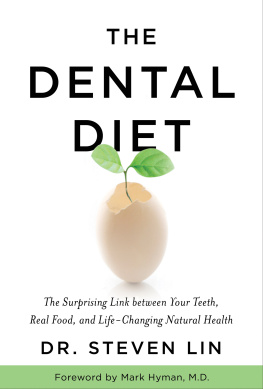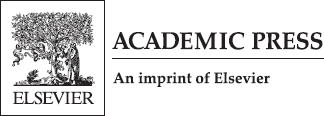Table of Contents
List of tables
- Tables in Chapter 1
- Tables in Chapter 3
- Tables in Chapter 4
- Tables in Chapter 5
- Tables in Chapter 6
- Tables in Chapter 7
- Tables in Chapter 8
- Tables in Chapter 9
- Tables in Chapter 10
- Tables in Chapter 11
- Tables in Chapter 13
- Tables in Chapter 15
List of figures
- Figures in Chapter 1
- Figures in Chapter 2
- Figures in Chapter 3
- Figures in Chapter 4
- Figures in Chapter 6
- Figures in Chapter 7
- Figures in Chapter 8
- Figures in Chapter 10
- Figures in Chapter 11
- Figures in Chapter 13
- Figures in Chapter 14
Landmarks
Diet, Microbiome and Health
Handbook of Food Bioengineering, Volume 11
Edited by
Alina Maria Holban
Alexandru Mihai Grumezescu
Table of Contents
Copyright
Academic Press is an imprint of Elsevier
125 London Wall, London EC2Y 5AS, United Kingdom
525 B Street, Suite 1800, San Diego, CA 92101-4495, United States
50 Hampshire Street, 5th Floor, Cambridge, MA 02139, United States
The Boulevard, Langford Lane, Kidlington, Oxford OX5 1GB, United Kingdom
Copyright 2018 Elsevier Inc. All rights reserved.
No part of this publication may be reproduced or transmitted in any form or by any means, electronic or mechanical, including photocopying, recording, or any information storage and retrieval system, without permission in writing from the publisher. Details on how to seek permission, further information about the Publishers permissions policies and our arrangements with organizations such as the Copyright Clearance Center and the Copyright Licensing Agency, can be found at our website: www.elsevier.com/permissions.
This book and the individual contributions contained in it are protected under copyright by the Publisher (other than as may be noted herein).
Notices
Knowledge and best practice in this field are constantly changing. As new research and experience broaden our understanding, changes in research methods, professional practices, or medical treatment may become necessary.
Practitioners and researchers must always rely on their own experience and knowledge in evaluating and using any information, methods, compounds, or experiments described herein. In using such information or methods they should be mindful of their own safety and the safety of others, including parties for whom they have a professional responsibility.
To the fullest extent of the law, neither the Publisher nor the authors, contributors, or editors, assume any liability for any injury and/or damage to persons or property as a matter of products liability, negligence or otherwise, or from any use or operation of any methods, products, instructions, or ideas contained in the material herein.
Library of Congress Cataloging-in-Publication Data
A catalog record for this book is available from the Library of Congress
British Library Cataloguing-in-Publication Data
A catalogue record for this book is available from the British Library
ISBN: 978-0-12-811440-7
For information on all Academic Press publications visit our website at https://www.elsevier.com/books-and-journals

Publisher: Andre Gerhard Wolff
Acquisition Editor: Nina Bandeira
Editorial Project Manager: Jaclyn Truesdell
Production Project Manager: Punithavathy Govindaradjane
Designer: Matthew Limbert
Typeset by Thomson Digital
List of Contributors
Navneet Agnihotri , Panjab University, Chandigarh, India
Asif Ahmad , Pir Mehr Ali Shah Arid Agriculture University, Rawalpindi, Punjab, Pakistan
Fasiha Ahsan , National Institute of Food Science & Technology, University of Agriculture, Faisalabad, Pakistan
Hussain Al Dera
King Saud bin Abdulaziz University for Health Sciences
King Abdullah International Medical Research Center, Riyadh, Saudi Arabia
Rawan Aldahash , King Saud bin Abdulaziz University for Health Sciences, Riyadh, Saudi Arabia
Priyanka Bhadwal , Panjab University, Chandigarh, India
Chetna Bhandari , Panjab University, Chandigarh, India
Maira R. Segura Campos , Autonomous University of Yucatan, Mrida, Yucatn, Mxico
Petko Denev , Institute of Organic Chemistry with Center of Phytochemistry, Plovdiv, Bulgaria
Afaf El-Ansary
King Saud University
Autism Research and Treatment Center, Riyadh, Saudi Arabia
Masatoshi Hara , The Japan Dietetic Association, Tokyo, Japan
Rita M. Hickey , Teagasc Food Research Centre, Fermoy, Ireland
Jane A. Irwin , University College Dublin, Dublin, Ireland
Monika E. Jach , The John Paul II Catholic University of Lublin, Lublin, Poland
Daniel C. Javitt , Columbia University Medical Center, New York, NY, United States
Gabriel A. Javitt , Technion University, Haifa, Israel
Akira Kanda , HANA Nutrition College, Tokyo, Japan
Sumaira Khalid
Pir Mehr Ali Shah Arid Agriculture University, Rawalpindi
Government College University, Faisalabad, Punjab, Pakistan
Samanta S. Khora , VIT University, Vellore, Tamil Nadu, India
Danuta Kooyn-Krajewska , Warsaw University of Life Sciences, Warsaw, Poland
Sandeep Kumar , Panjab University, Chandigarh, India
Edwin E. Martnez Leo , Autonomous University of Yucatan, Mrida, Yucatn, Mxico
Sana Mahmood , National Institute of Food Science & Technology, University of Agriculture, Faisalabad, Pakistan
Yuseok Moon
Department of Biomedical Sciences, Pusan National University, Yangsan
Immunoregulatory Therapeutics Group in Brain Busan 21 Project, Busan, South Korea
Sinead T. Morrin
Teagasc Food Research Centre, Fermoy
University College Dublin, Dublin, Ireland
Nalan H. Noay , Erciyes University, Kayseri, Turkey
Armando M. Martn Ortega , Autonomous University of Yucatan, Mrida, Yucatn, Mxico
Fanny Ribarova , Medical College J. Filaretova, Medical UniversitySofia, Sofia, Bulgaria
Suma Sarojini , Department of Life Sciences, Christ University, Bangalore, Karnataka, India
Anna Serefko , Medical University of Lublin, Lublin, Poland
Mian K. Sharif , National Institute of Food Science & Technology, University of Agriculture, Faisalabad, Pakistan
Bhoomika Sharma , Panjab University, Chandigarh, India
Prerna Sharma , Panjab University, Chandigarh, India
Barbara Sionek , Warsaw University of Life Sciences, Warsaw, Poland
Silvia Tsanova-Savova , Medical College J. Filaretova, Medical UniversitySofia, Sofia, Bulgaria
Dorota Zieliska , Warsaw University of Life Sciences, Warsaw, Poland
Foreword
In the last 50 years an increasing number of modified and alternative foods have been developed using various tools of science, engineering, and biotechnology. The result is that today most of the available commercial food is somehow modified and improved, and made to look better, taste different, and be commercially attractive. These food products have entered in the domestic first and then the international markets, currently representing a great industry in most countries. Sometimes these products are considered as life-supporting alternatives, neither good nor bad, and sometimes they are just seen as luxury foods. In the context of a permanently growing population, changing climate, and strong anthropological influence, food resources became limited in large parts of the Earth. Obtaining a better and more resistant crop quickly and with improved nutritional value would represent the Holy Grail for the food industry. However, such a crop could pose negative effects on the environment and consumer health, as most of the current approaches involve the use of powerful and broad-spectrum pesticides, genetic engineered plants and animals, or bioelements with unknown and difficult-to-predict effects. Numerous questions have emerged with the introduction of engineered foods, many of them pertaining to their safe use for human consumption and ecosystems, long-term expectations, benefits, challenges associated with their use, and most important, their economic impact.







